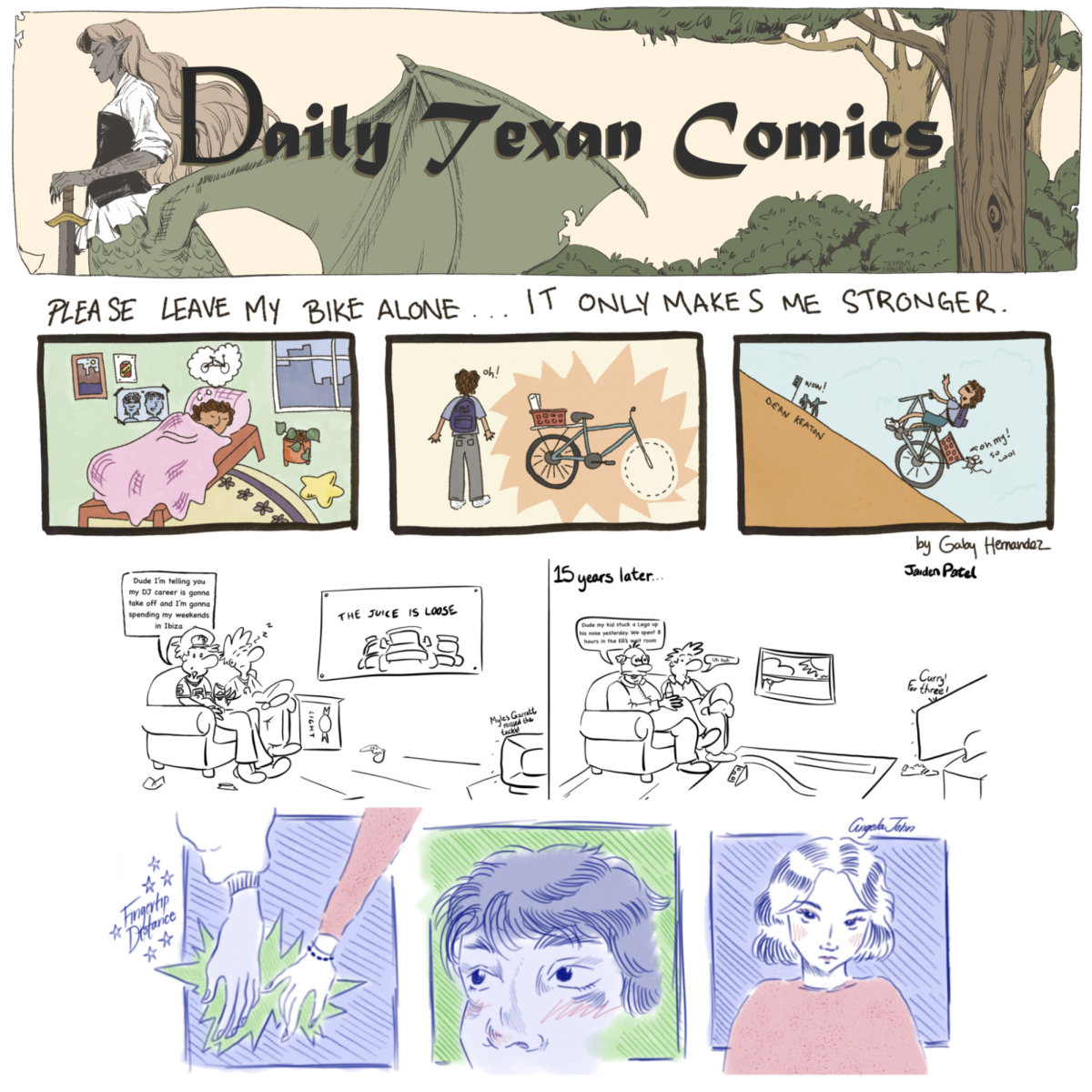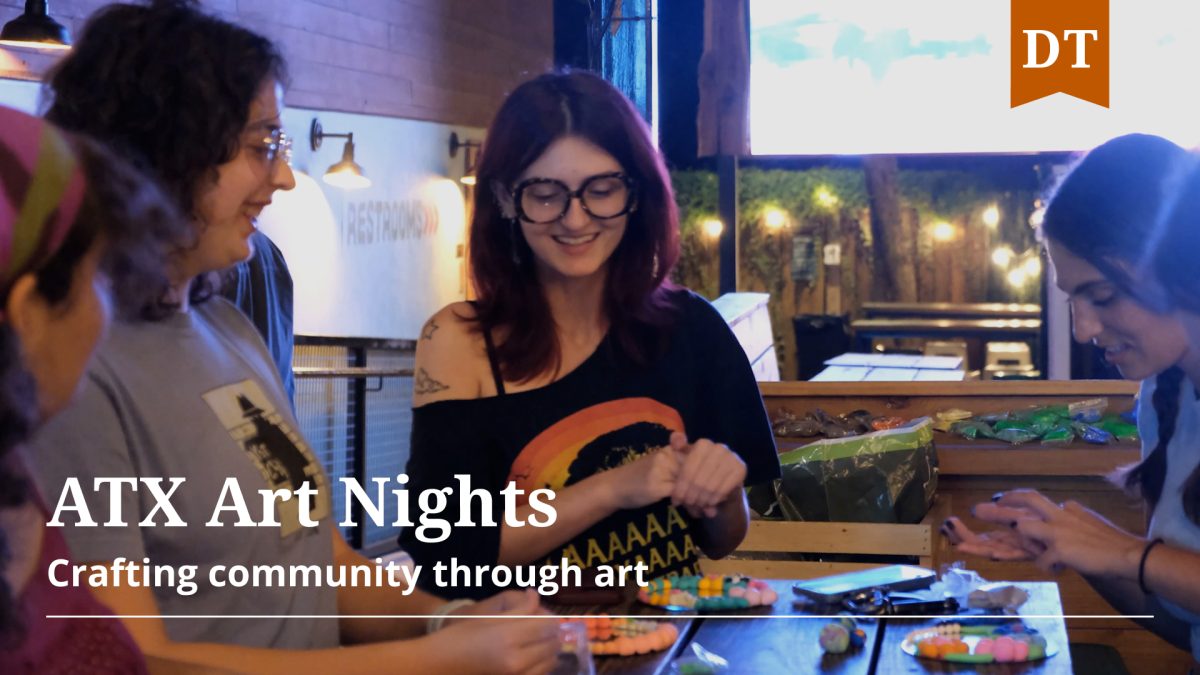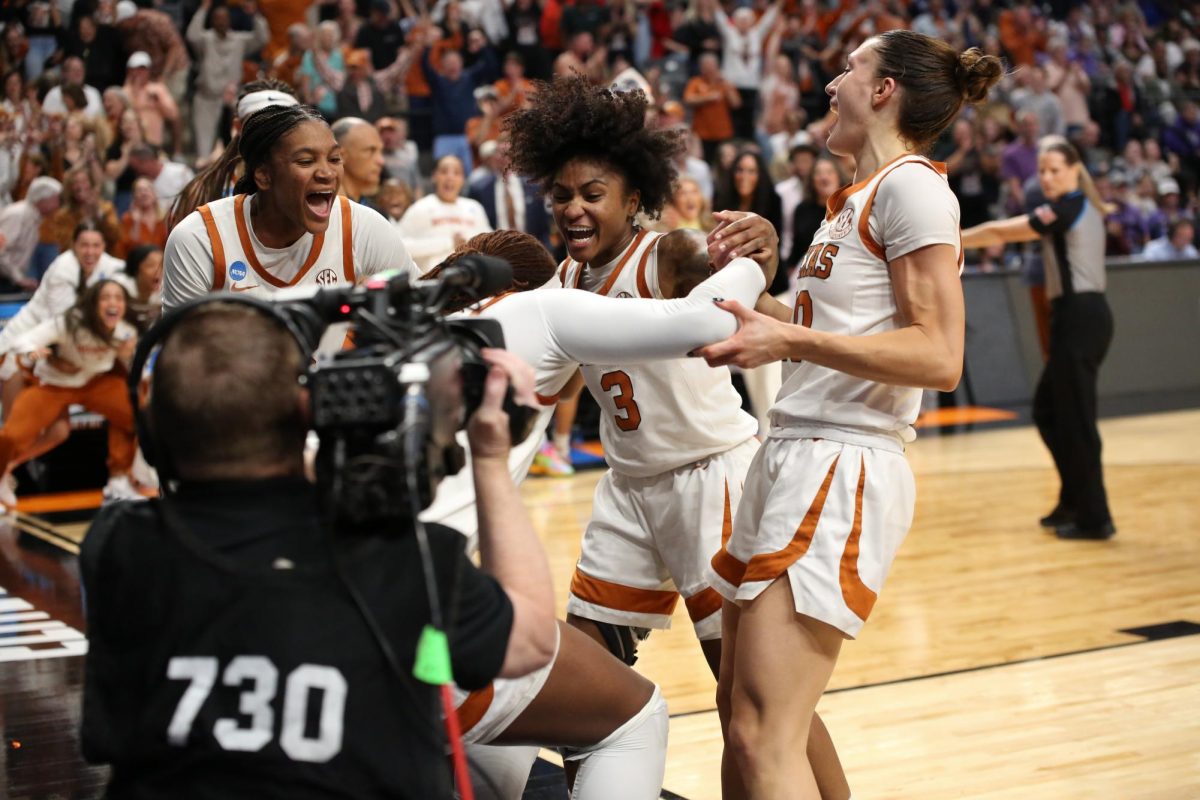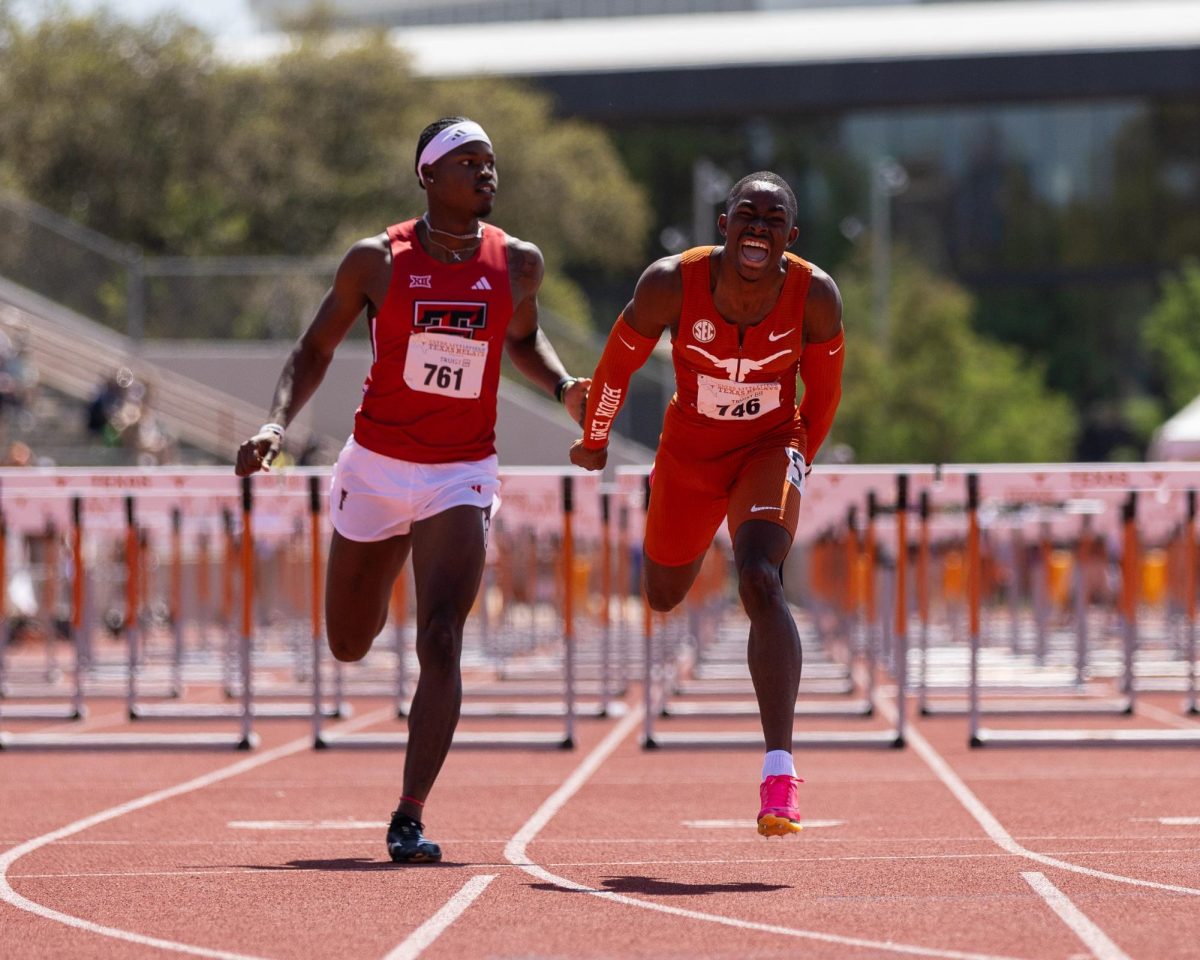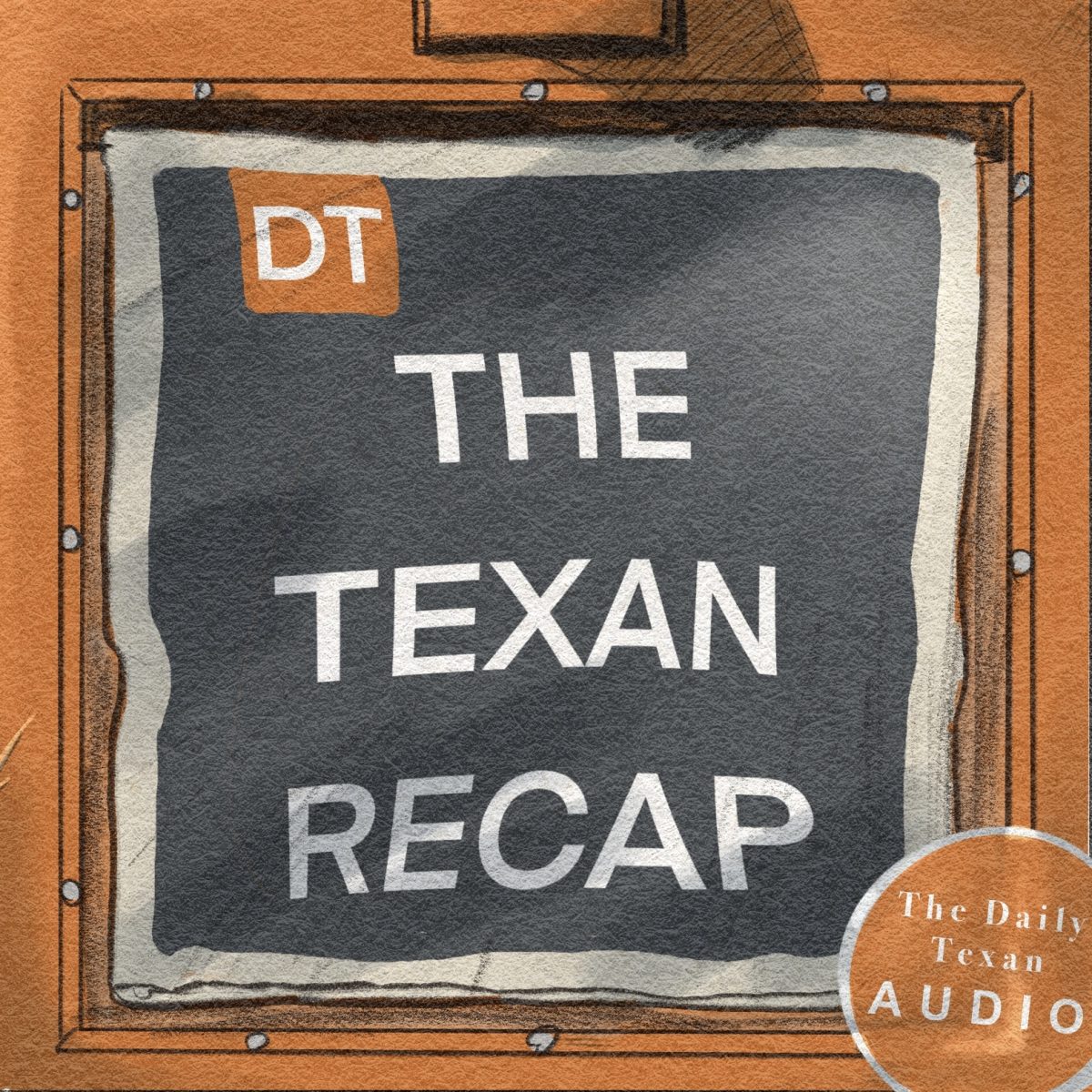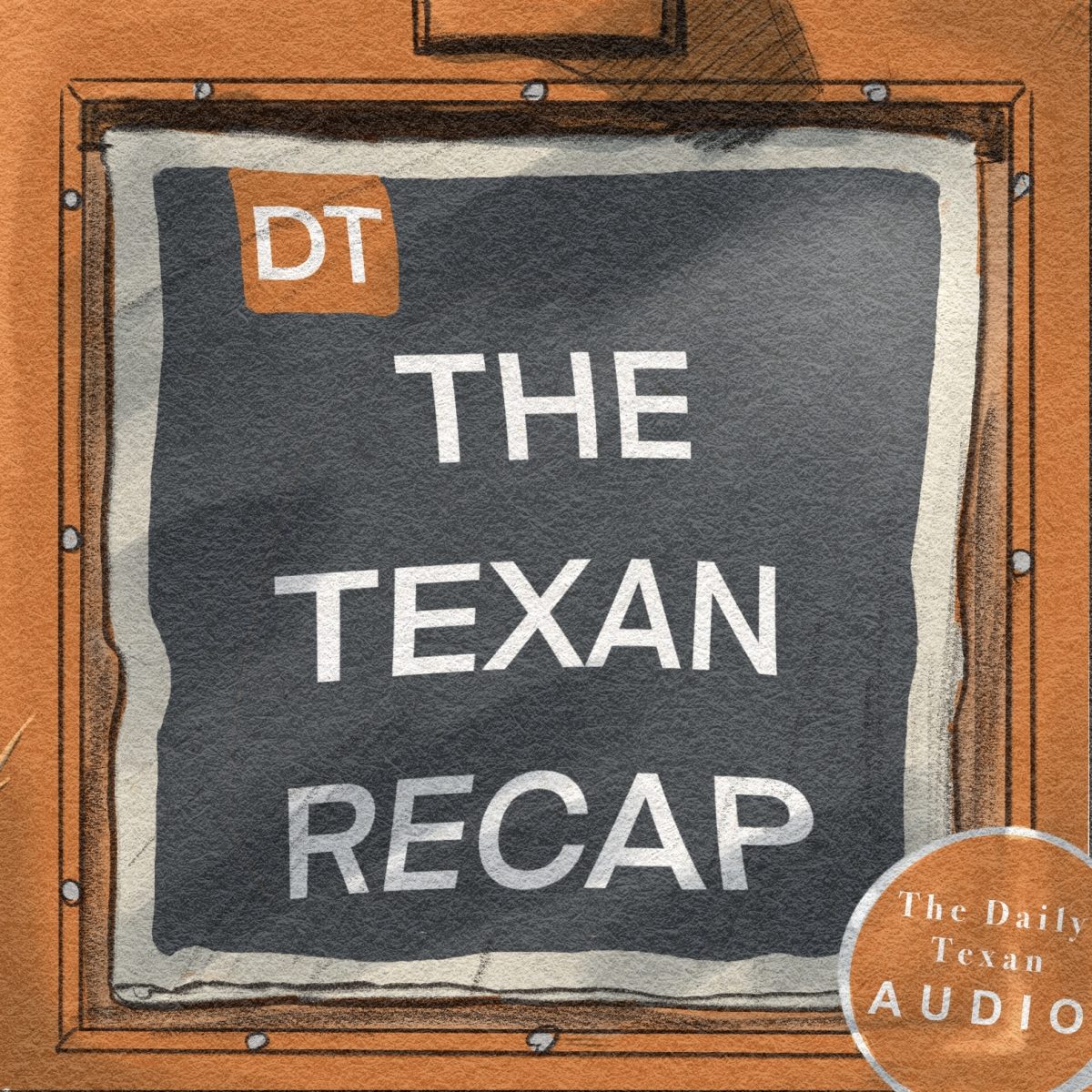Editor’s note: This podcast was originally published on Spotify on March 24, 2024.
In this episode of The Texan Recap, General Audio Producer Amrutha Mummidi chats about the new sculpture at Pease Park. Plus, how UT supports Muslim students during Ramadan.
Reported by Aaron Sullivan and Tyler Pullum. Hosted by Amrutha Mummidi. Edited and supervised by Jack Lewellyn. Cover art by Emma Berke. Music by Top Flow Productions.
*upbeat music*
Amrutha Mummidi: The unveiling of a new sculpture was made earlier this week at Pease Park…and UT’s Muslim students speak on campus support during Ramadan
I’m your host this week, Amrutha Mummidi and this is The Texan Recap.
Here’s what you missed this week.
*upbeat music*
Amrutha: The unveiling of a new sculpture was made earlier this week at Pease Park. Senior News Reporter Aaron Sullivan is here with the story. Thanks for being here, Aaron.
Aaron Sullivan: Thank you for having me.
Amrutha: To start, could you tell us a little bit about the newest sculpture edition in Pease Park?
Aaron: Yeah, for sure. Um, so Thomas Dambo and a team of other Danish artists unveiled an 18-foot-tall sculpture of a troll called, um, Malin’s Fountain last Friday.
It was the Friday during spring break. Um, and so Dambo and his team have built, um, 129 of these trolls, including Malin, um, worldwide, um, and they use locally sourced recycled materials, um, mostly wood, but there’s some other ones too. Um, and so if you’ve ever been to Pease Park, the sculpture is located kind of like north of the park’s like main kind of grassy area, um, and then it’s kind of like along the trails that’ll lead you to 24th Street heading north.
Amrutha: In your article, you spoke to the lead artist of Malin’s Fountain. What did they have to say?
Aaron: Yeah. So Thomas said he always tries to incorporate these, um, troll sculptures into the local environment. Um, and it certainly helps that like, there were plenty of volunteers that were from Austin who were helping him kind of put these trolls together.
Um, at least the one in Pease Park. And, um, one of my sources at the Pease Park Conservancy said that like about a hundred volunteers actually helped build the troll over a bit.
And another interesting thing that he said was that he doesn’t really, like, sketch out his troll before he, like, starts putting it together. He kind of just, um, uses his body to find the expression and the position that the troll is going to be in. It seemed like he was kind of like a spatial thinker. Um, when I was interviewing, actually interviewing him, he kind of, um, he would get on the ground and kind of illustrate with the dirt and the sticks and everything.
So it was really interesting to kind of see him lay out his process for me.
Amrutha: You also analyzed the themes of Malin’s Fountain. Could you tell us a bit more about the construction and the significance of the structure?
Aaron: Yeah, um, so Dambo came to Austin last summer just to kind of see the space that he was going to be working within Pease Park.
Um, and he told me that the city’s just, you know, immense summer heat really stuck with him. Um, and so while he was working there in the park and kind of seeing where he was going to put the troll, um, he saw that people were leaving like water feeders out for the birds and the squirrels and everything, um, because the creek that runs through the park at the time was all dried up.
Um, and so he, you know, because of this experience, he chose the troll’s theme to be water. Each one of his trolls around the world has its own theme. And so, yeah, this big troll, Malin, she sits crisscross applesauce, and she holds this big metal bowl in her hands. And Thomas said that he wants people to just put water in there anytime that you’re passing by for the animals, for the squirrels and the birds.
And he hopes that it becomes kind of like a tradition, like going to feed the ducks with your grandma. Um, and another way that the theme of water kind of shows up is, um, through the recycled materials themselves, um, a lot of the wood is actually Douglas fir from a retired water tank at the university’s J.J. Pickle Research Campus, which I thought was a really cool addition.
Amrutha: Your story mentions that many UT students visit Pease Park regularly. Did you get the chance to speak with any students? What did they say?
Aaron: Yeah, I ran into three students. Um, I went to the park on Monday, right before we published the story.
And, um, it was their first time seeing it. And all three of them were just shocked by the size of the sculpture. Um, they said that they were having some trouble finding it. Um, Dambo, the artist said that he kind of likes to hide his trolls within the trees and make it kind of a little bit of a scavenger hunt.
But overall they just made it sound like it was, it seemed like a nice, like great spot to hang out. Um, there were like kids running around and climbing on the, the, uh, sculpture while I was talking with them. And it’s just like this nice little open space in the trees with this amazing public art for people to experience.
Amrutha: What new sculptures can we expect in the future?
Aaron: So, Thomas said he has a few different projects lined up here in the future, but the 130th troll will be built in Rhode Island later this year. Um, and the way that Thomas described it, it kind of made it sound like it’s gonna be like an amphitheater with like another big wooden troll at the, like, the centerpiece of it all.
So, I’m kind of excited to see how that’ll turn out.
Amrutha: Well, thank you so much, Aaron. It was so nice having you.
Aaron: Thank you. for having me.
*upbeat music*
Amrutha: UT’s Muslim students speak on campus support during Ramadan
Senior Life & Arts Reporter Tyler Pullum is here to tell us all about it. Thanks for joining me, Tyler.
Tyler: Thanks for having me.
Amrutha: To start us off, could you tell us a little bit about the cultural significance of Ramadan?
Tyler: Basically, from my understanding, the cultural significance of the month of Ramadan is basically a time where people fast and they really work on their self-improvement and self-discipline and getting closer to God and really focusing on their faith and developing themselves when it comes to their religion.
Amrutha: In your article, you spoke with some students about the ways that the UT community can support students during this time. Could you tell us what they said?
Tyler: Some students mentioned that they wish there were more dedicated prayer spaces for Muslim students on campus. Additionally, some of the students I talked to said that they wish that there was more understanding from faculty and TAs regarding how Ramadan impacts their lives and schedules during the month.
One student even said that after asking to take her exam at a different time, she still had to miss Iftar, which is when they break their fast, and do the makeup prayer.
Amrutha: One student you interviewed specifically spoke about the importance of being able to take part in the festivities of Eid al-Fitr. What’s the significance that surrounds this day?
Tyler: From my understanding after talking with students, I learned that this is a celebration that basically concludes the month of Ramadan. It’s a time where people really get together and they celebrate and they eat a bunch of food and they really like celebrate and appreciate the fact that they just completed the month, which was really about prayer and self-discipline.
And now it’s like, okay, like we did this and we’re so proud. And we’re celebrating the fact that we just completed this month.
Amrutha: With the large Muslim population at UT, there are many students who are currently celebrating Ramadan. Are there any major student events where students are celebrating together on campus?
Tyler: There are several student-led organizations that have really led the charge of organizing Ramadan celebrations and events. One of the largest is the Texas MSA, or Muslim Students’ Association, which recently organized a cultural Iftar celebration along with the Nueces Mosque, which stands as a center for community in West Campus for Muslim students.
And also at the mosque, they provide Suhoor and Iftar meals for students and community members basically throughout the entire month.
Amrutha: In your interactions with students, did you learn of any of the ways the university has provided their support to students during Ramadan?
Tyler: I know that University Housing and Dining has provided meals for students participating in Ramadan to pick up, and there are a few prayer rooms on campus, but what I got from students is that the strongest support systems that they have forged are the ones with other students in student based organizations like at the mosque and other organizations that offer community and safe space for Muslim students.
Amrutha: Well, thank you so much for coming on today, Tyler.
Tyler: Thanks again for having me.
Amurtha: And that’s The Texan Recap for the week of March 18th. I’m Amrutha Mummidi.
*upbeat music*
Amrutha: The Texan Recap is a production of The Daily Texan Audio Department.
If you liked this episode, make sure to subscribe to The Daily Texan on your streaming platform of choice and follow us on Twitter @texanaudio.
This episode was hosted by me, Amrutha Mummidi, and edited and supervised by Jack Lewellyn.
Special thanks to Aaron Sullivan and Tyler Pullum for their reporting and to Joelle Dipaolo, Mimi Calzada and Chloe Moore for contributing to this project.
Cover art is by Emma Berke and music is by Top Flow Productions. To read the news stories in this episode or see more from the Texan, head on over to www.thedailytexan.com.
Thanks for listening, and I’ll see you next week.

